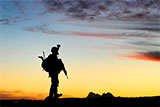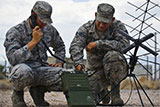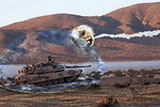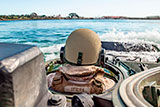
The Scout n° 47 - April 2022

Image: Mstyslav Chernov, CC BY-SA 4.0
The Role of Emotions in Military Strategy

Image: Mstyslav Chernov, CC BY-SA 4.0
Data transport will decide the next conflict, not hypersonics

Image: Mstyslav Chernov, CC BY-SA 4.0
Send in the Quadcopters: Arm Ukrainian Citizens with Simple Drones

Image: Mstyslav Chernov, CC BY-SA 4.0
Active Protection Systems and Suite Controllers for Combat Vehicles

Image: Mstyslav Chernov, CC BY-SA 4.0
Guerrillas, Revolutionaries, Insurgents, and Militias and Mafiosi: the Grim Threats of Irregular Strategy

Image: Mstyslav Chernov, CC BY-SA 4.0
Countering Hybrid Warfare: Mapping Social Contracts to Reinforce Societal Resiliency in Estonia and Beyond

Image: Mstyslav Chernov, CC BY-SA 4.0
Aligning the Marine Corps Warfighting Lab's Vision

Image: Mstyslav Chernov, CC BY-SA 4.0
Intelligence disclosures on the Ukraine crisis and beyond

Image: Mstyslav Chernov, CC BY-SA 4.0
All strategies short of war: getting the most out of the gray zone", Modern War Institute

Image: Mstyslav Chernov, CC BY-SA 4.0
Being Open about intelligence

Image: Mstyslav Chernov, CC BY-SA 4.0
The Metaverse: a new domain of warfare?

Image: Mstyslav Chernov, CC BY-SA 4.0
Marine Corps launches new littoral unit that US adversaries reportedly hate

Image: Mstyslav Chernov, CC BY-SA 4.0
Urban warfare expert offers Ukrainians tips on battling Russians in close combat

Image: Mstyslav Chernov, CC BY-SA 4.0
The two debates in military circles the war in Ukraine could help settle

Image: Mstyslav Chernov, CC BY-SA 4.0
The militant drone threat is no longer new. Why does it still feel novel?

Image: Mstyslav Chernov, CC BY-SA 4.0
The army is full of inspired and innovative thinkers-it just needs a way to leverage them

Image: Mstyslav Chernov, CC BY-SA 4.0
Army electric vehicles goals 'pretty darn achievable' but challenges remain

Image: Mstyslav Chernov, CC BY-SA 4.0
Sharpening the Spear: Moving SOF's Operating Concept Beyond the GWOT

Image: Mstyslav Chernov, CC BY-SA 4.0
The Lieutenant and the Interagency: Linking Tactics to Strategy in Integrated Deterrence

Image: Mstyslav Chernov, CC BY-SA 4.0
Cyber Ethics: On the Use of Ethical Considerations in Hybrid Warfare

Image: Mstyslav Chernov, CC BY-SA 4.0
Killing without conscience
Black Mirror, season 3, episode 5.





